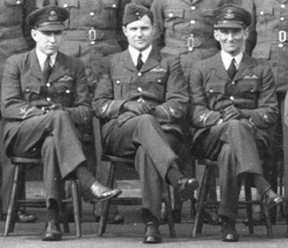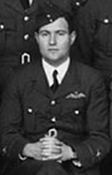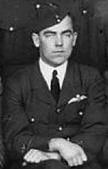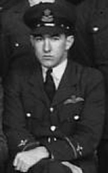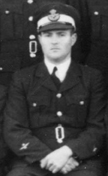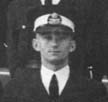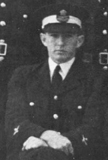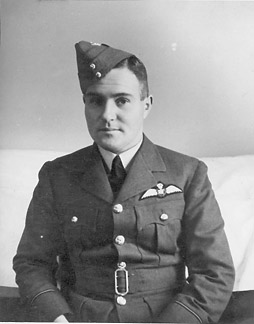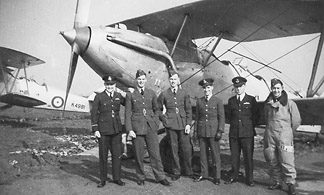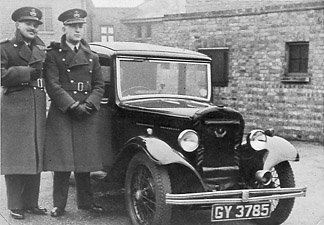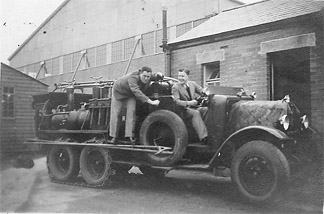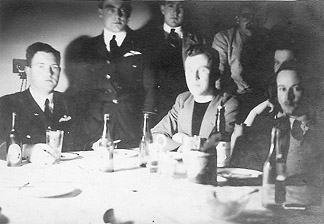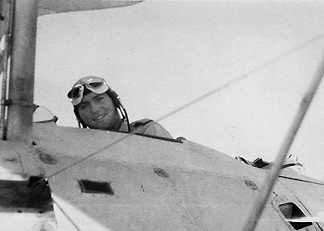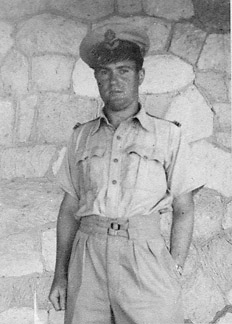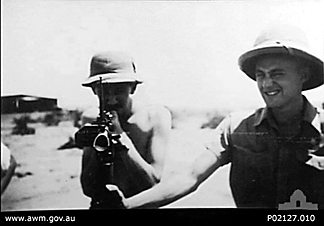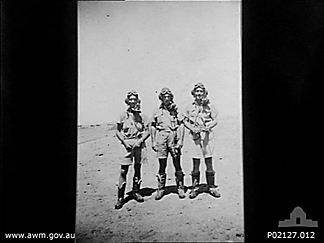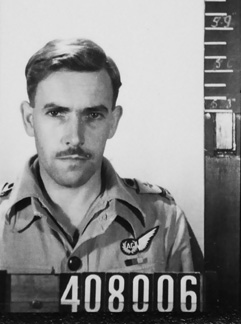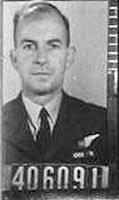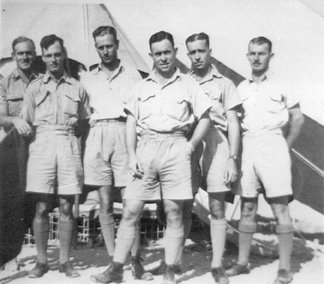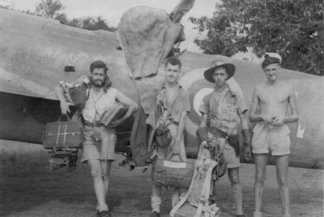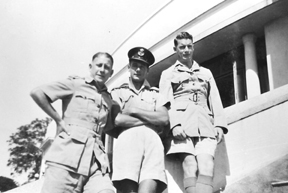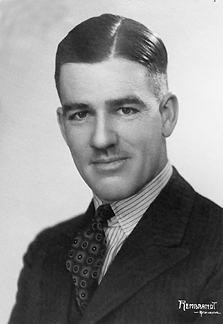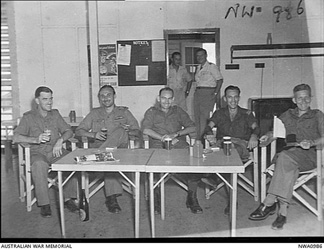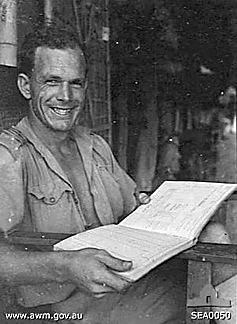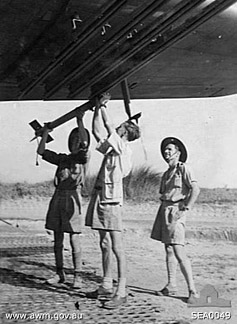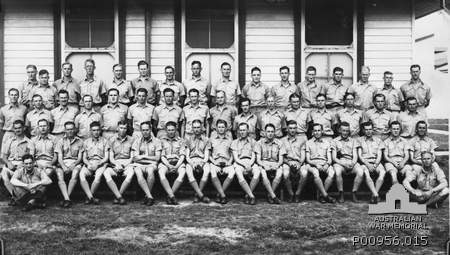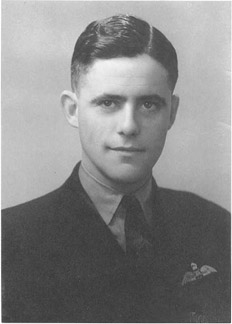 |
 |
|||||||||||||||||||||||||||||||||||||||||||||||||||||||||||||||||||||||||||||||||||||||||||||||||||||||||||||||||||||||||||||||||||||||||||||||||||||||||||||||||||||||||||||||||||||||||||||||||||||||||||||||||||||||||||||||||||||||||||||||||||||||||||||||||||||||||||||||||||||||||||||||||||||||||||||||||||||||||||||||||||||||||||||||||||||||||||||||||||||||||
|
RAAF personnel of 211 Squadron Many Australians served with No. 211 Squadron RAF over the course of its existence from 1937 to 1946. From Grantham in 1937 and 1938, to the Middle East, the Western Desert and Greece from 1938 to 1941, resting to form 72 Operational Training Unit in late 1941, in strength to the Far East in 1942 for the Sumatra and Java campaign, and finally in the 1943-1945 Burma campaign, at least 100 Australians were associated with 211 Squadron, 98 as trainee or as operational aircrew, with one non-flying Cypher Officer. Most of them were RAAF personnel, but five were RAAF Point Cook graduates who joined the RAF under the pre-war RAAF/RAF Short Service Commission exchange scheme. Another man joined the RAF on a Short Service Commission directly, while one man was commissioned directly into the RAAF Administrative and Special Duties Branch. The remaining 93 were war-service aircrew volunteers, destined for the Empire Air Training Scheme and, for most, RAF squadron service. Four died in training with 72 OTU. Of the 48 Australian aircrew who took part in 211 Squadron operations from 1940 to 1945, 16 lost their lives in action in Sumatra and Java, and one in captivity as a PoW. In Burma, two more RAAF aircrew were lost, missing in action. From Point Cook to the Middle East and beyond... Research among the various official records uncovered enough for at least an outline for the service of 40980 F/O ART Barnes, sufficient to draft the beginnings of a narrative for him. His service number indicates that he entered the RAF directly, on a Short Service Commission. It was soon after the 211 Squadron website first went on-line in 2001 that the Edwards family in New South Wales made me aware of the Australian origins of 40045 F/O WH Edwards DFC (later F/Lt of 107 Squadron, taken PoW 12 May 1940). The mementoes and other records gathered patiently by his family and kindly made available to me, made compiling a narrative for Bill Edwards possible. In Farrington’s case, his late widow Alison Legge originally got in touch over some additional details for my little book 211 Squadron RAF: Greece 1940—1941. Since the 211 Squadron story went on-line, their son John Farrington has kindly gone to great lengths to provide much additional information and in turn, I have replied in kind as other fragments come to hand. All these led, in time, to an account of the RAF service of 40046 Flt Lt AL Farrington (later S/Ldr 582 Squadron, KIA 29 August 1944), which has turned out not only to parallel that of Edwards, but to intersect with it. Edwards and Farrington both enlisted in the RAAF well before the war, qualifying as pilots at RAAF Point Cook from the July 1936 ‘A’ Cadet course entry. Having graduated as pilots, both were selected and commissioned in the RAF under the RAAF/RAF Short Service Commission exchange scheme in the July 1937 party (and one of the last to embark). Between 1926 and 1938, the scheme resulted in at least 149 young RAAF cadet pilots transferring to the RAF, their Cadet year at Point Cook counting as the first of a five or six year RAF commission. 33 of these young officer pilots later died or were reported missing in RAF service. The men of the exchange scheme were properly Australian members of the RAF, and accorded service numbers of a particular RAF set. Their service records to this day are held at RAF Cranwell. The Grantham Trio The Squadron was shortly to embark for the Middle East and Geoff Grierson's print of the formal Squadron photograph taken at Grantham, dated March 1938, was the key. Among the 15 officer pilots and four Sergeant pilots of the Squadron, three Pilot Officers of Australian origin were revealed, by their darker uniforms and RAAF eagle cuff badge.
A comparison of Air Force List editions from October 1937 to January 1939 against London Gazette entries and against RAAF rolls of Point Cook cadets for the exchange scheme then revealed another surprise: not three but four 211 Squadron Pilot Officers were of RAAF officer-cadet origin. All four had been commissioned in the RAF under the scheme, as their service numbers show: 39453 P/O DG Boehm (RAAF Pt Cook January 1936 Course) For a time it had seemed that Cameron had qualified as early as the 1930 Course, then came the final surprise in this little mystery. In the United Kingdom, Guy Black had unexpectedly found pages from a 1930s album of 211 Squadron photographs, taken by an unknown airman. Boehm, Cameron and Farrington were all shown, in RAAF blue and eagle cuff badge, all named by the photographer.
Further searching with the assistance of the RAAF Museum Point Cook uncovered the RAAF Cadet Course group photographs for January and July 1936, with personnel identified by surname. The RAAF Pt Cook January 1936 course photo showed Boehm and Cameron together. Here, enlargements from the original scans show the four cadets destined for RAF commissions and posting to No. 211 (Bomber) Squadron as it reformed.
Farrington (left), Boehm (centre) and Edwards (right): three Pilot Officers of Australian origin, now confidently identified. Cameron is absent. The same shot appears on Edwards’ page. A number of people gave a hand in solving this puzzle: Adrian Fryatt, Guy Black, Mike Grierson, Errol Martyn, Dean Norman and Terry in particular, with assistance from RAAF Historical Pt Cook, and from John Partington. Boehm and Cameron were in fact the first two Australian Pilot Officers posted to the re-forming Squadron, on 24 June 1937 according to the October 1937 Air Force List. While the July 1937 list showed S/Ldr RJA Ford as the sole member at Mildenhall joining on 5 July, the Squadron diary records Boehm as senior officer in command as of his arrival, on 24 June! Cameron and Boehm both appeared in each Air Force List roll for the Squadron thereafter to January 1938. Farrington was posted in on 27 November 1937, and Edwards on 8 January 1938. By the April 1938 Air Force List, Cameron had been posted to 226 Squadron. Boehm, Edwards and Farrington continued to appear in the 211 Squadron roll of each edition up to and including January 1939 (the last with Squadron rolls). P/O DG Boehm 39453
P/O Boehm in RAF blue. This looks to be a self-portrait in quarters, apparently on posting to 211 Squadron at Grantham by the date. Don Boehm sent a number of photographs back to Marion at home, typically with chatty descriptions on the rear. Although he later decided to remain in the RAF, the two remained friends until his death in Greece on active service with 84 Squadron in 1941.
From “port to starboard”: P/O Boehm (left, in RAAF blue), APO Eddison (Australian, in RAF blue), APO Branson (Canadian, likewise), APO Darling (Canadian, also), P/O Cameron (Australian, RAAF blue) with an English airman (Sergeant) pilot, far right in Sidcot. That’s snow on the ground behind Boehm. He remarked several times on the varied origins of those he met in the late 1930s RAF. This group just happened to be there on the day: “nearly 50% of the RAF officers are Colonials” he remarked. The aircraft here are Hart Trainers of 11 Flying Training School, Wittering, K4981 to the rear being on charge there from late 1935 until as late as May 1939.
The car is a Morris Cowley Flatnose in 4-door Saloon form. The Flatnose followed the Bullnose that some may recall. The model was produced from 1926 to 1931, in this form and as 2 or 4-door coupe and tourer. A Union Jack is carried on a short staff mounted on the front chassis and some form of RAF badge is affixed to the radiator grille. Boehm is in RAF blue and wears a small moustache. “I’ll have something much better in 1942” he noted on the back, probably thinking of the end of his Short Service Commission. Sadly, not to be. Undated, but perhaps some time before the next photograph.
Don Boehm, left, still with moustache, John “Red” Williams the Welsh pilot, right, with “Miranda”. All spick and span: “hence the proud father look” remarked Boehm. They had just returned from Church Parade. Both cars sport the same winged badge. While the flat lighting and the cover for the radiator obscure other detail, the distinctive bumper (two tapered bars with cursive lettered centre boss) eventually proved to be typically Austin. The Austin 10, a small 4-door saloon, was introduced in 1932.
A bit of off-duty horseplay on a dull chill day. Don Boehm rings the fire-bell madly as the “driver” looks on. The fire-truck is serious kit on an RAF station, of course. In the early 1930s the service was equipped with several types of fire tender, including Crossley, Ford and Morris Commercial designs all with the 6 x 4 wheel arrangement. This Morris Commercial example wears dismountable half-tracks on the rear driving wheels while the bonnet is covered against the cold. The state of the airfield at Aldergrove that Winter left them dealing with the minor drama of nose-overs but no fire, fortunately.
Left to right: Boehm, Cameron, Farrington, Williams (a Welshman) Magill (of NZ) and Couchman (England). There is one other face obscured in the shadows of this bold “available light” shot, unidentified behind Couchman. If they all look a bit stiff, they are holding the pose for a very long exposure.
In the cockpit of an anonymous Hind while active against the Arab Revolt.
Back from Palestine, a confident look in a shady (and popular?) spot for a snap to send home to friends. 39455 P/O DA Cameron 40045 P/O WH Edwards 40046 P/O AL Farrington An Australian in command 211 Squadron and 72 OTU The official record of 72 OTU, the Operations Record Book (TNA AIR 29/686) begins with a summary of the period September 1941 to December 1941, covering the formation of Middle East OTUs, the work of 211 Squadron in training and as an OTU nucleus, and the ultimate formation of 72 OTU with a strength of the order of 1,000 airmen. On withdrawal from Aquir in Palestine that June, the Squadron had proceeded under the command of S/L Blomfield via Heliopolis, Ismailia and Wadi Halfa to take post at Wadi Gazouza in the Red Sea Hills of The Sudan. From June to mid November 1941 the Squadron operated there as a reserve training squadron and ultimately to provide a nucleus for No 72 OTU, mainly for the final training of RAAF aircrew. Photographs of this period are among those of my father Sgt CFR Clark, his crewmate Sgt Bill Baird and of Allan Conrad. By late July, Blomfield had been replaced by W/Cdr Macdonald. In signing the Log Books of the RAF aircrew instructors (Baird and Clark, eg) and of the RAAF personnel under training (like RM Barclay, Bill Burnside, Lindsay “Charger” Cameron, Les “Perce” Payne and Jim Vernon) the various commanders continued using their 211 Squadron designations until about 11 November: the 13 crews of No 1 Blenheim Operations Course passed out the following day. No. 72 OTU was formally established at Wadi Gazouza on 18 November 1941. Sadly, three Australian aircrew died in the course of training there. Aircrew and groundcrew of 211 Squadron remained attached to the rapidly expanding OTU until briskly extracted, en masse, on 20 December 1941. On that date 211 Squadron set out from Wadi Gazouza to re-establish itself at Helwan, pending departure to the Far East equipped with 24 Blenheim Mark IV aircraft. The size of the 211 Squadron aircrew party remains uncertain on re-forming but came to number 90 or more (42 of them RAAF men) by late January 1942. The initial groundcrew strength can more be readily counted, as the loss of some 300 men at short notice was noted dourly in the 72 OTU Operations Record Book. The 211 Squadron movement order and nominal roll of the 292 airmen of the ground party to depart by train for Helwan (under the now practised command of F/Lt Dundas DFC) was also appended to the ORB. There are many names in the roll familiar from Greece and from the Far East PoW rolls. The majority of these men set out as the Squadron’s Sea Party, many of them ultimately falling captive in Java in March 1942. In all, the Squadron set off for the Far East in January 1942 with a total strength of about 500 men. RAAF personnel: 211 Squadron and 72 OTU, Middle East 1941 A number (Cameron, Fraser, Furmage, McLellan, Prentice, Tonkin and Thornton, for example) were posted to 211 Squadron in Palestine as early as May 1941 without the benefit of an OTU course. At the time, the Squadron was operational with ‘A’ Flight, with ‘B’ Flight undertaking aircrew training. The RAAF men remained, to pass the Blenheim Operations Course at Wadi Gazouza. Les Payne and and several other Queenslanders had stuck together and were in a similar fix: already with 11 Squadron in Palestine when it was discovered that none of them had passed an OTU course. So off to Wadi Gazouza they went, and thus they find their place in the 211 Squadron story. Some, like Charlie Pailthorpe, were posted to 211 Squadron in early June 1941 at Heliopolis, as the Squadron was stood down to reserve status for training duties, the first Blenheim Operations Course requiring some 50 flying hours and of nominally six weeks duration, weather and serviceability permitting. In the event. the 13 crews of No 1 Course only passed out on 12 November 1941. Like Longmore, Nourse and Thomson, Mervyn Scope was apparently with one of the later courses. No 2 Blenheim Operations Course began at Wadi Gazouza in October 1941 to be carried out largely under 72 OTU control: seven crews passing out on 3 January 1942. Thereafter, No 3 Course completed on 18 January again with seven crews passing out, followed by No 4 Course on 31 January 1942 with 10 crews. There are now 46 RAAF personnel identified here, from course photographs (of Burnside, Baird, Barclay, Keeping and Payne); an Australian course menu; Australian War Memorial, CWGC and Australian Archives records; the recall of surviving Australians Barclay, Payne, Frith, and Gaston, and the histories of 45 Squadron and 84 Squadron, and from UK National Archives AIR 81 casualty files. Although service identities for some have proved elusive to date, there is no reason to doubt their Australian origin. Sixteen of these men did not survive the war, four of them (Sgts Skinner, Dunstone, and Thomson; and Sgt Wheeler, were lost in separate accidents while training at Wadi Gazouza. 211 Squadron and 72 OTU June—December 1941 Losses July—December 1941 In the nature of things, many of these RAAF men went on to other RAF or RAAF Squadrons on completion of their courses. Among them, many went to either 11 Squadron RAF or 45 Squadron RAF, while others served with 84 Squadron or 113 Squadron: Blenheim boys together. Some examples follow. Others still are discussed in the Far East context, below. RM “Bob” Barclay DFC Bob went on to 45 Squadron with his pilot P/O GG Furmage RAAF and Observer P/O C Pailthorpe RAAF in late November 1941. He stayed on with the Flying Camels until 1945, in Blenheims in the Middle East, and Vultee Vengeance and Mosquito operations in the Far East, with Geoff Furmage as his pilot: they had been mates at school and so remained until Geoff’s death in 2001. When Bob marched out of the RAAF in November 1945 a Flight Lieutenant W/Op with DFC, he had no less than 114 operations in his log book. In the course of a cheerful correspondence with me, Bob added a number of names to the RAAF story: he and Bill Baird shared several matching Wadi Gazouza photos in their collections. The Australian War Memorial also holds a number of official photographs of 45 Squadron RAF in India, including several of Bob and his mates at ease. Unsurprisingly, he never mentioned the award of his DFC in August 1945 for 45 Squadron service. I had to find out about that myself. From Bob’s collection of treasures came a delightful memento from a happy August 1945 “picnic race day” at Bhopal Embarkation Depot, shortly before repatriation to Australia. The Royal Drongo Turf Club race guide devised by depot personnel gives the flavour of the meet. Race 2 The Indian Steaks was for 12 yr olds...obviously a tough event! Among the runners (donkeys, all) rated with a chance: Deficiency (by Airmen out of Kit). Good one, Bob! For non-Australian readers, a “drongo” is generally a person who’s a bit of a dill and quite possibly a mug punter—a no-hoper, in short. In the 1940s an RAAF recruit was also, with heavy irony, a “drongo”. The colt Drongo first ran, well fancied, at Flemington in the 1920s but never placed higher than second in 37 starts, retiring in 1925 the archetypal “drongo” who couldn’t win a trick. In contrast, the Spangled Drongo, Dicrurus bracteatus, is a starling-like bird of the eastern and northern Australian rainforests, glossy black and wholly proficient, in both insect hunting and in aggressive defence of young nestlings. Robert Montrose Barclay DFC died at the age of 96 on 28 May 2013, in the small western Victorian town that had long been his home. Farewell, old friend. Bell T 402184 Sgt KIA 9/9/42 Sgt Maurice Kennedy (Bill) Burnside
“Jim Vernon looking through the sight of a gun while 400188 Sgt Observer Maurice Kennedy "Bill" Burnside RAAF, steadies it. These men are attached to No. 211 Squadron RAF. Original photograph album housed in the AWM Private Records Collection at P00491, donor J. Burnside”. Sgt Burnside’s Log Book for the period August to October 1941 is signed by F/L CW Thomas as OC ‘B’ Flight 211 Squadron, F/Lt KC Dundas DFC as OC Night Flying 211 Squadron, and W/Cdr Macdonald as CO 211 Squadron. Sgt Burnside, crewed with Les “Perce” Payne and “Charger” Cameron, completed his course on 11 November. On that date, W/Cdr Macdonald signed his Log Book entry as CI, 72 OTU. Among the Blenheim Is in which Sgt Burnside flew were L1520, L6655, L1533, L6663, L8539, L1492, L1482 and L8517, including a ferry flight from Khartoum to Wadi Gazouza 30 August 1941 as Navigator to Sgt Jock Marshall DFM in L6655. With crewmates Les Payne and “Charger” Cameron, Burnside was later a member of 11 Squadron. By mid 1942 he was serving with 55 Squadron in the Middle East. Rising to Flight Lieutenant, he was discharged from the RAAF in late 1945 while serving at RAF West Freugh in the United Kigdom. Bill Burnside died in Sydney on 8 December 1978. Lindsay Douglas “Charger” Cameron 408006 Within a couple of weeks, the two-Flight set-up at Aquir enabled the start of some Blenheim training, however, it was a scrappy time and in early June the Squadron was withdrawn to Heliopolis. There orders were received for the big move to Wadi Gzouza to operate as a reserve training Squadron. In November, the Squadron provided the nucleus for the larger training effort of 72 OTU but by then Flt Sgt Cameron had completed his Blenheim ops course.
Left to right: Les “Perce” Payne: Jack Nankerviss and "Charger" Cameron (Original photograph album housed in the AWM Private Records Collection at P00491, donor J Burnside). From Wadi Gazouza, “Charger” was posted to 11 Squadron in the Western Desert with Les Payne as his pilot, Bill Burnside as Observer, and other Australians from 72 OTU (Harvey Besley, for example). By March 1942 the Japanese thrust across Asia and the Pacific had made for a very grim prospect, in India and in Australia: 11 Squadron moved to Ceylon with their Blenheims, to immediately face the dangers and losses of the Battle Of Ceylon against Japanese naval forces. After a brief post-Java visit to Australia in early 1942, RAF WOp/AG Bill Baird also found himself posted to Ceylon and 11 Squadron: the two remained in touch until Charger’s death in 1982 at the age of 65. Meanwhile, Cameron and Payne pressed on with XI Squadron after the Battle, Charger being made Warrant Officer in September 1942, leaving them only in October 1943 on their conversion to Hurricane IICs for close support. Along the way, crewed with Les Payne, he had spent time at both Ranchi and Feni, where 211 Squadron were later to operate. Successive 221 and 231 Group HQ postings followed, with his commission as Pilot Officer in between in January 1944.
Back in Australia and newly promoted in July 1944, F/O Cameron has his RAAF paybook photograph taken. One look says it all. This is not the blank thousand-mile stare of the tour-expired veteran having endured many operations and much being faffed about. Something else has sharpened his gaze here, to a degree that still grips 80 years later. In late July 1944 he was posted home to Australia. An Ops Room course and posting followed, apparently to 84 Squadron RAAF, which took him to the end of the war, demob, and return to pretty Deloraine in Tasmania. Something of a risk-taker pre-war, in post-war civil life Charger was not averse to taking on mindless authority, so successfully defending a fishing rights charge with a mate in the late 1940s to be mentioned in the Press. Fraser AA 400131 By some clerical quirk, an earlier entry, apparently in error, records him as posted to 71 OTU (at Gordon’s Tree, near Khartoum) in October 1941: they were responsible for pilot training (both fighter and Army co-operation) but Arch Fraser was a WOp/AG who’d earned his sparks badge at 1 BAGS Evans Head. It was in this role that he was posted to 45 Squadron in early December 1941, as his record and the 45 Squadron history note. Fraser would certainly have known Bob Barclay and other Australians who’d been at Wadi Gazouza. Commissioned in 1942, after completing his tour with 45 Squadron Fraser returned to the UK and went on to fly with 463 Squadron RAAF. By war’s end he had completed a second tour, for a grand total of 31 sorties in all. F/Lt Fraser left the RAAF in May 1945 “at his own request” in the formal words of the time. In a transcription quirk on the Australian World War II Nominal Roll, Arch becomes “Astor” instead of Aston. Furmage GG 408009 Geoff Furmage had also just missed joining 211 Squadron in Greece, only to be posted to 211 Squadron’s training Flight at Ramleh and then Aquir in mid-May 1941. His initial Blenheim flying training log was signed off by the OC ‘A’ Flight, F/Lt KC Dundas DFC at Wadi Gazouza in late July. Following the move, it was early September before the serious flying exercises of No 1 Course began for Furmage (with Charlie Pailethorpe and Bob Barclay as his regular crew). On completing the Blenheim Ops course in early November 1941, his ability as a Pilot was assessed by W/Cdr Macdonald as above average, a pleasing result. On 22 November the three were posted as a crew to 45 Squadron in the Western Desert, then on to the Far East for the first Burma campaign from February 1942. He survived, to fly Douglas Dakotas with 37 Squadron RAAF. Leaving the RAAF as a Squadron Leader in July 1945, Geoffrey Greer Furmage returned to civilian life and marriage in his native Tasmania, where he died in March 2002. Alfred Charles Longmore AFC, AGM Nourse and SC “Scotty” Thomson Longmore escaped at the fall of Java with 84 Squadron CO Jeudwine on the Scorpion open boat voyage to Australia in March 1942 and went on to serve with 34 Squadron RAAF. He was awarded the Air Force Cross in 1944, “for examplary courage and resoucefulness whilst flying”. Nourse had been evacuated from Batavia with some other 84 Squadron men aboard HMT Yoma, sailing in convoy SJ5 to Colombo on 20 February 1942. He went on to serve with 113 Squadron but was posted missing on 25 May 1943 when his crew failed to return from an operation over Burma. He is commemorated on the CWGC Singapore Memorial. Thomson was taken captive by the Japanese on Java in March 1942 but survived. John (Jack) McNamara, Bill Penn and Norm Bruce The initial recording of McNamara’s loss was quite confused, the date of death amended three times before the final clarification on his personal file: killed on active service by enemy action 25 February 1942. On his AWM commemoration card, the details remained 17 March at Rangoon. Commonly, RAAF casualty files were created for personnel lost in air action: lost in ground action, only McNamara’s service record can be found. McNamara was posted to 211 Squadron in its OTU role on 1 October 1941, as were Sgt DW Penn 407274 RAAF and Sgt NA Bruce 400668 RAAF. Together as a crew they passed their Blenheim Ops course, then were posted through ME Pool back to 211 Squadron for the Far East move wef 17 January 1942. The correct date and place of McNamara’s loss long remained confusing (some sources recording him incorrectly as an 84 Squadron man attached to 45 Squadron). While the first 211 Squadron flight left Helwan on 25 January to reach Mingaladon airfield on the outskirts of Rangoon in Burma on Sunday 1 February, the fourth and last 211 Squadron flight from Helwan on 28 January had reached there on 3 February 1942. By that date, the airfield had already come under attack. On the way, there were a number of 211 Squadron stragglers, due to servicing difficulties for aircraft becoming unserviceable en route. It turned out that Jack McNamara and his RAAF crewmates Sgt Penn and Sgt Bruce left Helwan in the third flight of six, on 27 January 1942, and were held up in just this way as recounted in the notes on Blenheim IV Z7892. McNamara and his crew are recorded in Jefford’s wonderful work The Flying Camels: The History of No 45 Squadron RAF as one of several “guest” crews of 84 and 211 Squadron who, delayed en route, reached Burma to be “taken in” by 45 Squadron as they strove to resume operations around 16 Feb 1942. Attached to 45 Squadron on arrival in Mingaladon on 15 February, McNamara was lost on the ground there in the IJAAF attack of 25 February which destroyed 5 of 45 Squadron’s Blenheims: “The second Japanese attack, at about 1615hrs, caught the Blenheims on the ground on their way back to Magwe and there were two casualties, both Australians. Sgt Jack McNamara was killed by flying shrapnel and his observer, Sgt Bill Penn, was wounded; their WOp/AG Sgt Norm Bruce made his way to Highland Queen...” Detached from 211 Squadron before the date of his unfortunate death, poor McNamara falls between two stools—neither a survivor, nor at his death a part of the Squadron—nevertheless, a 211 member he was, for a time, as were his crew. Bruce and Penn both survived the war. Charles Douglas (Charlie) Pailthorpe DFC
A late RAAF paybook photograph of Charlie after his return to Australia in 1944, from the 35mm contact print in his RAAF A9300 personnel file in the National Archives of Australia. He wears the later winged ‘N’ of the Navigator, his DFC ribbon and a campaign ribbon, apparently what was then the 1939—1943 Star (later 1939—1945 Star). By late July 1940 AC2 CD Pailthorpe 406091 was at No 2 ITS Bradfield park in Sydney. From there he was posted to No 1 Air Observer’s School, out at Cootamundra in the South West Slopes region of New South Wales. Passing the Observer’s course he went on to 1 BAGS to learn more of bombing and gunnery in Fairey Battles over the Evans Head ranges, then on to 1 ANS Parkes for advanced navigation training, passing out with his Air Observer’s winged ‘O’ badge on 9 February 1941. Commissioned a Pilot Officer in mid-March, he embarked for overseas service on 17 April 1941. By 5 May he was in Egypt and posted to 211 Squadron, then briefly at Heliopolis to regather itself for the move South to the Sudan as an OTU. From 20 June onwards he was flying as Observer, navigating the Blenheims initially with the experienced old hands like F/Lt Dundas and Sgt Pilot Watkins. Soon enough he was flying frequently with his regular crew, Geoff Furmage as Pilot and Bob Barclay hunched in the turret. By early November, their Blenheim Ops course was done, in some 75 hours flying, five of that in the desert night. W/Cdr Macdonald signed him off with that infrequent and pleasing rating of proficiency as Observer “Above average”. From their 211 Squadron training, Furmage, Pailthorpe and Barclay went on to operational service with 45 Squadron. Charlie Pailthorpe later served in a number of Photo Reconnaissance Units over Burma, lastly for nine months with 681 Squadron in B25s where his “great skill on flying operations” brought the award of a DFC in June 1943. Stood down from ops at last in November 1943, he spent some time in staff postings in India before being repatriated to Australia in November 1944. Charlie returned to farming in the South-West of WA after the war and it was there that he died in 1979, after a tractor accident, survived by his widow Alison. Les “Perce” Payne Les found himself at Middle East Pool with Ted Tyzack and others in 1941, and then posted to 11 Squadron in Palestine.
Left to right: Mick Woodham, Hugh MacLennan, Jeff Hiller, Noel Stevenson, PL Payne, T Tyzack. Half of this group of Australians survived the war. 407075 Sgt GA Hiller died on 2 December 1941 over Libya and lies in the Knightsbridge cemetery at Acroma. 404107 Sgt HA MacLennan went missing in action, presumed killed, during the 11 Squadron attack on the IJN ships of Nagumo Force off Ceylon on 9 April. On the same operation, W/O 407083 NL Stevenson was KIA with his crew in Blenheim IV Z7803. Five of the nine attacking Blenheims were lost while the Japanese aircraft sank the RN aircraft carrier HMS Hermes with HMAS Vampire in short order. The loss of corvette HMS Hollyhock with fleet tanker SS Athelstane followed soon after. The missing crews of 11 Squadron are commemorated on the CWGC Singapore memorial. When it was realised that the Australians had not passed through an OTU, the whole group were sent on the first Blenheim Operations Course with 211 Squadron at Wadi Gazouza from July to November 1941.
Straight after a visit to the barber’s shop, nine Australian Sergeant pilots. Left to right, rear: Prentice, Barrett, SW “Wally” White, Tonkin, McLellan, PL Payne Front, left to right: HEM “Ted” Tyzack, GW Hartnell, HA MacLennan. Wally White returned to 11 Squadron after his OTU course but was killed in air operations from Colombo on 15 March 1942. With bomb-doors off to accommodate the depth-charge loaded for a sea patrol, Wally, “Torchy” Stairs and Noel Watt suffered engine failure on take-off. Stairs, the Navigator, survived. White and Watt were buried the next day, with Les Payne and the 11 Squadron boys in attendance. They lie in Colombo (Kanatte) General Cemetery, commemorated by the Commonwealth War Graves Commission. Sgt Pilot Payne and his crewmates Burnside (Observer) and Cameron (WOp/AG) also rejoined 11 Squadron in the Western Desert. By September 1941, Payne was a Flight Sergeant.
In best dress and serious mood, with 11 Squadron in Ceylon. McCann had joined them as Observer in place of Burnside on moving there in March 1942. Though the Battle of Ceylon had been a bad result for the Squadron and for the Navy (with heavy loss yet little damage to the Japanese taskforce), Nagumo now withdrew from the Indian Ocean, never to return. The difficulties of the New Guinea campaign and the Battle of the Coral Sea were still to come, but the Japanese thrust had met its first reverse. In May 1942 Bill Baird caught up with them, after the disaster that had befallen 211 Squadron in Sumatra and Java. On 31 December 1942 and about to leave the Squadron, C/O W/Cdr Bob Bateson made a nice gesture, rating Les Specially recommended for promotion. On taking command of the Squadron the following week, W/Cdr AW Pennington-Legh may also have sighted Les’ Log Book, ops count and flying hours: he promptly signed the form again, with the same high recommendation. Three weeks later, AOC 222 Group concurred and PL Payne 404114 was appointed to his commission: Acting Pilot Officer (on probation), with effect from 7 January 1943. Promotion to Flying Officer came quickly, in July. He remained with 11 Squadron on operations over Burma until July 1943, ending his first operational tour having flown 34 sorties with them in 345 flying hours.
Left to right: McCann, “Charger” Cameron, Les “Perce” Payne, with a RN fitter. The boys are all pretty sweaty in the humidity of Ceylon, just back from anti-submarine patrol. The aircraft is “their” Blenheim IV Z7771. Apparently issued from new to 11 Squadron, Payne flew the aircraft from Helwan on the move to Ceylon in March 1942. This aircraft and crew was one of the few to return safe from the 9 April 1942 Battle of Colombo action. In 1943, the Squadron was in India. At Feni on operations on 14 March, a flight of three aircraft led by S/Ldr W Matheson was intercepted along the Burmese coast by Japanese Ki43s. In Z7927, the RAAF crew P/O FH Richardson 406409, F/O MG Williams 401018 and F/Sgt SA Osborn 407374 were shot down, all killed in action. In Z7771, Payne, McCann and Cameron returned safely but their aircraft was so well shot up that the aircraft was declared beyond repair to operational standard owing to main spar damage. Passed to a Gunnery School for target tug duty, it was struck off charge as late as 20 April 1944. F/O Payne went on to serve with 62 Squadron, operating Dakotas as transports and on supply drops over the Arakan, finishing his second tour in May 1944 with another 43 sorties in the Log Book. Les was repatriated to Australia in July 1944: he then joined 38 Squadron RAAF, again flying transport duties and supply drops per Dakota over forward areas in New Guinea and elsewhere. He was promoted to Flight Lieutenant in January 1945, leaving the RAAF in August 1945. Les took an active interest in matters Blenheim and kindly contributed a number of photographs for use here, freely dipping into the well of memory to talk of his mates, both lucky and unlucky. As time went on he continued to live quietly at home in suburban Brisbane, where he passed his 100th birthday in 2017. A kindly correspondent since 2005, he was still writing briefly as late as 2019. All things, however, must pass. PL “Les” Payne departed this life on 24 July 2022: a really nice chap, fondly remembered. Mervyn Scope, Pierson and McMillan You could say that he too was one of the lucky ones. Early in the morning of 17 January 1942, Mervyn Scope and his crew (Observer Sgt Cedric Howie Pierson 407590 RAAF and WOp/AG Sgt Robert Peter McMillan 406220 RAAF) got away with a mid-air collision and subsequent fire upon forced landing their Blenheim IV Z7695. Completing their Blenheim course towards the end of January 1942, Scope, Pierson and McMillan found themselves posted not with 211 to the Far East, but to 223 Squadron flying Martin Baltimores around the vast ME theatre. Mervyn Scope’s vivid recall of Wadi Gazouza and other adventures is well recorded in As Luck Would Have It, self-published in 1992. McMillan later served with 55 Squadron RAF and was awarded the DFC. He survived the war and in 2003 he recorded an extended interview with Imperial War Museum staff. While his views on the politics of the day were as dyspeptic as his views of RAF discipline and training, his interview makes interesting listening. John Skinner, Colin Dunstone and James Thomson Travers AR 408017 Sgt KIA 9/4/42 The Far East For the later Burma campaign, the India and Burma narrative records that the Squadron retained a complement of Canadian and Australian aircrew from its SEAC re-formation in 1943 to 1945, and that “6 Dominion pilots” were released in July 1945. The Squadron Operations Record Book at this period endeavoured to separately identify personnel of RAAF origin, and records 406372 S/Ldr Stacey DFC and 428875 F/O RM Reichstein, posted from the Squadron together on 12 August 1945 pending repatriation. These sources also record the loss two other Australians: 404741 F/O K Fuller in March 1944, and 401785 P/O JW Goddard at the end of May 1944. Four Australians in all: two lost in action. Between them, these sources also record 19 RCAF personnel and one South African, again readily identifiable in the ORB by their service numbers. It may be that these 24 men are the whole complement of 211 Squadron’s “Dominion pilots” in Burma. Odgers’ Air War Against Japan records that in the Burma-India theatre, RAAF strength peaked at 1,091 in July 1944, falling to 923 by January 1945 (of whom 872 were aircrew). Odgers records just one RAAF aircrew member of 211 Squadron at January 1945: this was certainly Stacey, as Reichstein was not posted in until April. Evidently, efforts to post RAAF personnel together had been less successful in this period than was the case earlier. Still, as they completed their tours, RAAF aircrew were at last repatriated. The following two RAAF personnel lists, not without caveats, represent a partial nominal roll of RAAF aircrew members of 211 Squadron in the first and second Far East campaigns. The first shows known survivors, while the second lists those lost. Assembled from the various sources noted, and partly reconciled with RAAF records, there are 45 personnel named on these lists who can with reasonable confidence be recorded as 211 Squadron members: 26 of the 28 on the RAAF survivors list and the 19 men of the RAAF personnel losses Honour roll. RAAF survivors, Far East The 28 men with RAAF service numbers are thus confirmed from sound sources as 211 Squadron personnel survivors of the Far East period: 26 in the Sumatra/Java period and two in India and Burma. Of the remaining two, mentioned in secondary sources and without service numbers, “A Devonshire” was most probably Anthony Devenish, an Englishman. T Williams remains untraced. 403770 Foreman WCW, a P/O Observer previously shown in the list, turned out to have been an RNZAF member of English birth—his career is summarised in the New Zealand section of the Personnel Rolls.
Brown RF 407357 Setting off for the Middle East on 27 June, by 31 July he was at Middle East Pool before proceeding via Mombasa.to 70 OTU at Nakuru in early September 1941. There he crewed up with P/O GS Hodges 407429 (Pilot) and P/O John Ellis 407497 (WOp/AG) for their Blenheim Operations Course. On a daylight cross-country exercise a few days after beginning their course, their Blenheim IV V6297 crashed into Lake Victoria. All three were hospitalised for a period at Entebbe, in Uganda, Brown with a severe ankle sprain. Recovered, they were able to return to Nakuru and complete their training. Brown was promoted to Flying Officer in early November. On Christmas Eve, the three were posted to 211 Squadron at Helwan. Posting with the Squadron to the Far East followed on 17 January 1942, apparently flying with Hodges and Ellis in one of the several unidentified Blenheim IVs of the Air Party departing Helwan in four Flights of six from 25 to 28 January. All three survived the period of intense operations on Sumatra and then Java and, once their Squadron’s aircraft had been fought to a standstill (and absorbed by 84 Squadron), withdrawal to Tjilatjap on the South coast. Brown’s RAAF record notes “28 Mar 42 Embarked ME on repat Aus per Stirling Castle”, the vessel at least confirmed in the record of his later report. The dates however have become jumbled and in fact record his arrival at 1 Embarkation Depot, Melbourne: Stirling Castle having reached port in the early morning of 27 March having departed Colombo on 14 March. As Kota Gede had arrived in Colombo on 6 March from Java, it seems that Brown, Ellis and Hodges were together among the RAF crowd aboard her. In addition to his brief account of the 13 February 1942 sweep reported once back in Australia, being a particular friend of Neville Oddie’s, Ginge Brown also wrote to the Oddie family about his loss. Once sorted out, Brown was posted to 6 Squadron RAAF from April to December 1942 to carry out a further 40 operations on Hudsons over New Guinea . After a stint with 67 Sqn and 1 OTU in 1943, he was posted to No 2 Squadron RAAF in September 1943, completing a third tour of 29 ops in June 1944 with an assessment of Above average and promoted to Squadron Leader. A long stint at No 7 OTU followed until well beyond the war’s end. Although a very experienced airman and a good bombing leader, his final report was not encouraging. In January 1946, he left the RAF, having seen and learned much. Bob Brown died aged 94 at Mount Gambier in South Australia on 10 January 2008. Devenish ADE 45422 Initially confirmed by the Log Book of the Swiss WOp/AG Fred Joerin: Devenish was his Pilot up to the time they both joined 211 Squadron. Further, the London Gazette (No 35127 of 4 April 1941) records that Anthony Donald English Devenish and GA Mockridge 45431 were both ex-Royal Artillery 2nd Lts commissioned into the RAF as Pilot Officers in April 1941 (note the proximity of their Service numbers). Both men became Blenheim pilots and went on to serve with 107 Squadron at Malta in late 1941, with 211 Squadron in early 1942 in Sumatra and Java, to be evacuated from Java aboard Tung Song. Devenish, it appears, survived the war. There being no matching record of RAAF service under the names A Devenish or A Devonshire, it seems probable that Bon Hall’s Glory in Chaos reference to this latter man, and as an RAAF pilot, is another misrecording for Anthony Devenish. Ellis J 407497 Originally of English birth, Ellis had married in South Australia. At the age of 29, he joined the RAAF through 5 Recruiting Centre, Adelaide, in October 1940. Commissioned a Pilot Officer in June 1941, he was posted to the RAF Middle East and by September 1941 to 70 OTU, where he crewed up with Hodges and Brown. Promoted to Flying Officer in December 1941, he was then posted to 211 Squadron with his crewmates on Christmas Eve, where he was made Gunnery leader. Flying with the Air Party to Palembang in Sumatra in late January 1942, presumably with Hodges and Brown, he was one of those fortunate to be evacuated from Java to Ceylon in March 1942, aboard the Kota Gede from Tjilatjap. Returned to Australia in June 1942, he was posted as Gunnery Instructor to No 1 OTU based at Bairnsdale (and later East Sale) but all was not well. Apart from the injuries suffered in the Blenheim accident, it transpired that he had been afflicted with incurable tropical illness. Given a final Confidential Report from 1 OTU that can only be described as glowing, John Ellis was promoted to Flight Lieutenant in April 1943 but he was by then seriously ill. Discharged from RAAF Wing, Royal Adelaide Hospital, on medical grounds in July 1943, he died on 22 March 1944 and lies in the RAAF section of the Centennial Park Cemetery in Adelaide. It was his son, also John, who sponsored the modern painting of the 211 Squadron badge, created through the RAF Heraldry Trust some years ago. John PR Ellis died at home in Adelaide in April 2023 after a long illness. His surviving family hope, in time, to collate his work on the war-time service of his father John. Hodges GS 407429 DFC By September 1941 Hodges had arrived at 70 OTU in Kenya, crewing up with P/O Brown and P/O Ellis for the Blenheim Operations Course during which he was injured in the crash of Blenheim IV V6297 in Lake Victoria on 24 October 1941, suffering concussion, severe shock and heatstroke and making him a member of the Goldfish Club, the badge of which he kept to the end of his days. Presumably Brown and Ellis were thus also Goldfish. Following three weeks in hospital at Entebbe he was sufficiently recovered to rejoin the 70 OTU course and complete it with his crewmates, to be posted to 211 Squadron on 24 December and thus for movement to the Far East, to fly with the Air Party departing Helwan from 25 January, presumably with Brown and Ellis. Surviving the difficulties of Sumatra and Java, according to his post-war service summary Hodges was “evacuated to Australia” on 15 March 1942 (a date well after the fall of Java). According to his record of service (Form PP24) he was at 1 Embarkation Depot (Melbourne Showgrounds) on 28 March 1942. If that latter date is correct, it is likely that he was with Brown and Ellis, apparently evacuated from Java aboard Kota Gede to Colombo, making port there only on 6 March, in time to embark on Stirling Castle departing 14 March to arrive in Melbourne before dawn on 27 March. In any event, after a longish period of non-operational postings, Hodges was promoted to F/Lt in 1943 and by July 1944 was also with 2 Squadron at Hughes in the Northern Territory, flying Bristol Beauforts and later North American Mitchells. He completed his second tour (211 Squadron being his first) of 38 sorties for which he was awarded the DFC as an “outstanding operational captain and leader”. A Squadron Leader by the end of 1944, Hodges remained with the RAAF until the end of the war, instructing at Point Cook. In 1950, when the Korean War broke out, the RAAF advertised for trained pilots and George Hodges stepped forward once more. His application was accepted and after a refresher course he was back flying, a F/Lt with 34 Squadron RAAF. He was finally discharged in 1953: “a good type of pilot and officer who the Service can ill-afford to lose”. George Stacey Hodges died in South Australia age 93 on 22 October 2004. Maitland WA 407997, Hubbard BJ 401037 and Lewis HV 406146
Back in Australia, Maitland had a stint as Flying Instructor on Ansons then late in the war was posted back to operations with No. 87 Squadron RAAF flying PR Mosquitoes. One of his claims to fame was that he flew the Squadron's last war-time operation. Of the three, he alone survived the war, returning to his native South Australia. There, in correspondence with David Vincent, he produced a couple of the rare photographs of Oosthaven in 1942. William Alexander (Bill) Maitland died in March 2010. “Lew” Lewis, the Sgt WOp/AG from Western Australia, fell captive in Java. He died in the sinking of the Tamahoko Maru in June 1944, torpedoed off Nagasaki with 772 PoWs aboard. She sank quickly. Although 212 of the PoWs were saved by the Japanese, sadly Lewis was not among them. Two other vessels in the convoy were sunk in the same action. Lewis’ casualty file includes a slip here, mistakenly noting the vessel as Rakuyuo Maru: she was torpedoed later, in September 1944, again with great loss. Lewis is commemorated on the Singapore Memorial. Promoted to Flight Sergeant, Hubbard the Victorian also remained in Australia and was posted to 32 Squadron RAAF, equipped with Lockheed Hudsons. On 4 November 1942, Hudson A16-173 suffered instrument failure while searching in bad weather and gathering dark for a reported submarine. Despite an attempt to offer beacon assistance by the Mt Brown searchlight battery, at about 2110hrs the aircraft hit the Illawarra Escarpment near West Dapto, killing the crew of four: the pilot Clark, the gunners, Iredell and Rich, and Hubbard, navigator. He was laid to rest in Cheltenham New Cemetery, Victoria. Manton WG 402665 and O’Brien B 401015
Martin RJ "Dicky" 400326 He was crewing with F/Lt K McDonald in a 22 Sqn RAAF Boston over Sydney Harbour in June 1942, doing low level sweeps after the Japanese submarine shelling of Bondi the night before. Unsuccessful in attempting to persuade McDonald (a pre-war aerobatic pilot) to perform a loop over the Harbour Bridge, he had to be satisfied with a low pass beneath the bridge (reputedly one of the first aircraft to do so). Matheson, Colin Kenneth 283378 In the manner of the time, the Mathesons later took residence in suburban Adelaide and sent their sons to be educated at St Peter’s College. Matheson senior died in 1913 on a voyage to the United Kingdom. After work as a jackeroo in country New South Wales, young Colin Matheson later returned to South Australia to work on the old family property. In March 1926 he married Jean Hill, of Yalumba, near Angaston in the Barossa Valley. They had four children, three sons and a daughter. By 1940, Matheson had been working Nilpena Station for a number of years, as Overseer for eight years and later as Manager.
This nice studio shot, by Rembrandt of Adelaide, shows a confident well-set Matheson around the time of enlisting in the RAAF. The Rembrandt studio was well-known for exhibitions and portraits of major figures of the day, at their King William Street establishment from the early 1920s into the 1970s. Well used to being in charge of men and too old to enlist for pilot training, Matheson took a different approach, applying for an RAAF commission in May 1941. Entering RAAF service through 5 Recruiting Centre Adelaide on 23 October 1941, he was immediately appointed a Pilot Officer in the Admin and Special Duties Branch (reflected by his less-usual Service number) and slated for overseas service attached to the RAF. To fly a desk, if you like, but men of this non-flying branch of the Service did much valuable work in a range of duties. Leaving Jean and the children safely with family at Yalumba, by 2 November Matheson was at 1 Embarkation Depot in Sydney, promptly embarking for the Middle East on posting to 206 Group RAF. Straight into cypher work, by 14 December 1941 he was at the Middle East Code and Cypher School attending a course, while attached to SHQ Heliopolis. By then, the entry of Japan into hostilities had rather altered the needs of the RAF. On 5 January 1942, Pilot Officer CK Matheson 283378 was posted as Cypher Officer to No 211 (Bomber) Squadron RAF for active service, as they prepared to depart for the Dutch East Indies and their first bitter struggle against the Japanese. His 17 January posting date for Far East service suggests that he may have been one of the Sea Party to board HMT Yoma, departing Port Tewfik on 17 January 1942. When Java was overrun by the Japanese in early March 1942, Colin Matheson was the one RAAF non-aircrew member of the many 211 Squadron men to be taken prisoner of war. A somewhat spirited pastoralist in civil life, his sensitive role as Squadron Cypher Officer meant real personal danger as a FEPoW, had the Kempetai any inkling of his actual duties. Nevertheless, Matheson survived the three years of captivity, first on Java and later on the Thai-Burma Railway, at Moulmein Camp (Burma) and at Thai Camp (Thailand) where he was reported safe sometime in 1943, and finally in Singapore at some date in 1945.
F/O Matheson, left, was fit enough to be repatriated to Australia in September 1945, aptly aboard SS Highland Chieftain, one of a large ex-FEPoW group arriving aboard her at Darwin on 14 September. There, again aptly (recalling pre-war adventures in South Australia), he was photographed enjoying a beer with fellow ex-FEPOWs in the RAAF Officer’s Mess. Demobbed in February 1946, Matheson took up his old calling as a pastoralist, once more managing Nilpena Station bordering the beautiful Flinders Ranges. Colin Kenneth Matheson, pastoralist and survivor of the Thai-Burma Railway, died in 1967. Paterson, Charles Andrew Hamilton 404514 The application form, in his now-digitised RAAF file, showed that he was likely to offer Andrew as his first name, with numerous crossings out to correct the order to his proper name. The reason may have arisen from family custom: his father was one Charles Hamilton Paterson. However it may have been, it’s clear that Paterson preferred to use Andrew, calling himself Dru and signing his name ACH Paterson or Dru CH Paterson according to whim. Paterson was attested for service in the RAAF in September 1940, passing to 2 ITS Bradfield Park, back to 2 EFTS Archerfield and on to 3 SFTS Amberley, both pleasing for his Queensland family. By May 1941 he had achieved his Flying Badge as a Sergeant pilot. Selected for overseas service, in June he embarked for the Middle East on attachment to the RAF. Once in Egypt, a period of cooling his heels at Middle East Pool followed, before he got to 70 OTU Nakuru in October 1941 to pass out crewed up on 6 December 1941. It was early January 1942 when his first operational posting came through: 211 Squadron—and shortly after, the formal posting with them to the Far East. Among his particular friends from 70 OTU was John Keeping, the gunner. It was Dru Paterson who wrote the final kindly letter entry in John’s diary after his loss on the night raid to Kluang with S/Ldr Dundas and Ritchie. Paterson was one of those evacuated from Java to Ceylon, apparently per Kota Gede. Returned to Australia, he was commissioned at the end of September 1942. He went on to serve with 33 Squadron RAAF and later with 36 Squadron RAAF as F/Lt. Dru Paterson left the service in October 1945 and returned to civilian life as a surveyor and engineer in Queensland. CAH (Drew) Paterson died on 8 August 1996, aged 83. Stacey PN 406372 DFC
Stacey “acquired a log-book which reads like 'Who's Who', when he was a pilot in a communications squadron. His passengers included Field Marshal and Lady Wavell; General Sir Claude and Lady Auchinlech; the last Viceroy, Lord Linlithgow; Air Chief Marshal Sir Richard Peirse, the Maharajah of Jaipur; the Governor of Bengal, the Honorable R. G. Casey, and Major General Wingate, among others”.
F/O Perce Stacey RAAF of Claremont, WA (right), watches armourers at work loading a rocket onto the rails: LAC RG Stephens RAF of Evesham, Worcestershire (left, in hat), LAC H Radcliffe RAF of Newcastle-under-Lyne, Staffordshire (centre, hatless). The cord and plug dangling from the rocket’s rear is the electrical igniter for the cordite propellant. Images reproduced with the kind permission of the Australian War Memorial, where a number of 211 Squadron images are held in the Collection Database. RAAF losses, Far East
* Shown as 6 February in some original sources, CWGC and other post-war references, the records of other participants on the day show the events as 7 February 1942. ** Lost with Sqn Ldr KCVD Dundas DFC at Kluang. *** Lost with Oddie (Observer) and Payne (WOp/AG) in Sumatra. Allan Bott, Nev Lynas, Hal Lamond Promoted to Sergeant at the end of August, after a sojourn at Middle East Pool in Egypt he was posted down to Kenya and 70 OTU at Nakuru for his Blenheim Operations Course from 30 October 1941. At 70 OTU, Bott crewed up with Sgt James Neville (Nev) Lynas (Observer) and Sgt Henry (Hal) Lamond WOp/AG: their course completed on the day before Japan entered the war. Among other NCO aircrew training at Nakuru around that time were Sgts Burrage, Keeping, Penry, AH Kendrick and GM Kendrick. Passing again through Middle East Pool, Allan Bott was posted to 211 Squadron on 28 December 1941 as they reformed at Helwan and on 17 January 1942, posted with the Squadron for Far East service. By early February 1942, the three had reached Sumatra in their Blenheim IV, possibly Z9713. At Palembang P2, 211 Squadron was about to begin operations against Japanese forces. Sadly, 400823 Sgt AT Bott RAAF: 406200 Sgt JN Lynas RAAF and 404212 Sgt H Lamond RAAF lost their lives while flying in Z9713 as part of a “fighter escort” in daylight for a British convoy of Singapore evacuees in Banka Strait. While the date of the operation is recorded by most participants as 7 February 1942, some signals and records refer to 6 February 1942, and that is the date most commonly used on commemorative records. Two RAF Casualty Section letters to the family of Nev Lynas used either date. Two Flights of three 211 Squadron aircraft undertook this escort task. According to a number of contemporary reports, all three aircraft of one Flight were attacked. In Z7586, Steele, Menzies and Gornall were also shot down over Banka Strait, all missing believed killed. The third aircraft, Z9659, crashed on return to P2. F/Lt Ken Linton the RAF pilot died the next day according to LAC Livesey’s diary (which may account for other reports that Linton was lost on the following day, returning from a reconnaissance sortie). For the difficult period of operations in February 1942, there are quite some number of discrepancies, whether between accounts and Log Book records at the time, with and between slightly later signals and reports, and with and between later recall and reporting. Exact dates, and the number and identities of participating aircraft and crews are all subject to some uncertainty which may not be possible to resolve. John Allan (Jack) Burrage 400643, David Stewart, Malcolm McDonald and Owen Penry Jack’s background in civilian life was as a radio engineer, at 3SR Shepparton. Soon after enlisting, he was selected for aircrew, as a pilot under training. Not long afterwards, he married Glenys, née Drummond. Qualifying for his pilot’s badge at RAF Point Cook about May 1941, he was promoted to Sergeant.
JA Burrage is seated fourth from the right, in the front seated row. Ten of the 51 men in this image died in the course of their RAAF war service. Attached to the RAF for overseas service, Jack was aboard Queen Elizabeth when she departed Sydney once more for the Middle East on 26 June 1941. In Egypt there was the usual period of sun, sand and flies in the tentlines at Middle East Pool in Egypt before he was sent on to Kenya, posted on a Blenheim Operations Course at 70 OTU in Kenya. There he crewed up with David Stewart 400545, Observer (another Victorian) and Malcolm McDonald 404298 of Charleville in Queensland, Wireless Op/Air Gunner: Penry and Stewart, at least, had also been with the RAAF contingent aboard Queen Elizabeth. While he was overseas, Burrage wrote home often to wife and family, keeping a careful count of letters in and out against the vagaries of war-time delivery. He also kept a notionally “forbidden” diary: by the time he left 70 OTU in November 1941 he had just started in a new one. Back at the dullness of Middle East Pool, he managed a trip or two to Palestine. On 28 December he learnt that he and his crew were posted to 211 Squadron at Helwan, where they joined them on 29 December, accommodated in the Transit Camp rather than at the RAF Station proper. The Squadron was re-fitting for the Far East, and Burrage was soon busy ferrying Blenheims in and out as they did so. These newer aircraft he liked, compared to the rather tired aircraft of 70 OTU. On 20 January he and several others, piloted by EP “Ginge” Coughlan 47209, flew up to Aboukir to collect some more Blenheims. After some muddle that gave them an over-night stop in the comparative luxury of Alexandria, they ferried their charges back to Helwan on 21 January. Burrage was pleased: “Had a lovely kite and v well equipped. Went like a scalded cat. Used the +9 [lbs] boost to get off the small drome but it was unneccessary. She leapt of the ground.” The next day he was even more pleased to find that that aircraft, Blenheim IV Z7776, had been allotted to him and his crew. They spent several days working on the final fit-out and on the guns. On Wednesday 28 January 1942 they flew out, en route to the Far East as No 3 in S/Ldr Ken Dundas’ leading vic of three, with Mackay, Oddie and Payne at No 3. Close behind them, the second vic led by P/O Bev West RAAF, with Sgt. Harrison and Sgt. Paterson and their crews. On 3 February, they reached Sumatra, finding Lho’nga drome near Koetaradja after some trouble, “very tired, irritable and hot after flying about 1,200 miles”. The next day they flew on to Pakenbaru and then on to Palembang where they stuggled to find the aerodrome in a tropical storm. On 5, 6 and 7 February, Burrage was getting to know the area and working on the aircraft at P2. Sat Feb 7th There are several differing accounts of this operation. Bearing in mind the source is a typed transcript copy of a hand-written account, there may be some slight variation from the intended meaning. One Flight of three aircraft did in fact return safely, led by Bateson the CO. Burrage’s account is so close in time to the action, and in close agreement with several other reports that it certainly seems most likely the escort op was mounted on 7 February (not 6 February), and that all three aircraft of one Flight, including Linton’s, were lost that day. Owen Penry was the last person to see Jack Burrage and his crew alive on 21 February 1941, as their formation of Blenheims flew into a heavy tropical storm en route over the Java Sea to attack the Japanese at Palembang in Sumatra. After the formation separated in the storm, Burrage and co, apparently in Blenheim Z9714, were never seen again. Having survived the Sumatra and Java affairs, Penry was repatriated to Australia via Colombo per Kota Gede and Stirling Castle. He went on to serve with 6 Squadron RAAF at Richmond, NSW and made every effort to help the Burrage family understand the circumstances of Jack Burrage’s loss, not only writing but also returning Jack’s diary and letters to them. Later a navigation instructor at 2 AOS Mount Gambier and elsewhere, Penry was commissioned in 1944. In 1945, he joined Qantas as a Navigation Officer. It is now some years since Gwen Mooney, Jack’s younger sister, kindly made copies of Jack Burrage’s second diary and letters home available to Adrian Fryatt, who passed a copy to me. Although it has taken so long to make use of this material, it has been of the greatest interest of itself and in compiling the narrative for CO Bob Bateson, with all the light (and fresh puzzles) they shed on the Squadron’s operations and losses in Sumatra and Java. Fuller K 404741 Initially mustered as an airman Observer under training, he already held a civilian A Class pilot’s license, with 45 hours logged. In early 1941 he embarked at Sydney for aircrew training in Canada. There, he succeeded in re-mustering as a Pilot and qualified for his RAAF Pilot’s wings through 11 SFTS Yorkton in Saskatchewan towards the end of July 1941. By February 1943 he had been commissioned and was promoted Flying Officer in August 1943. Posted to India that November, by January 1944 he was flying on operations with 211 Squadron with 1396062 Sgt SC Cook as his Navigator. Fuller and Cook failed to return from an early morning sortie from Bhatpara on 6 March 1944. Flying in Beaufighter X LZ227 ‘K’, they were one of six aircraft to attack airfields in the Zyatkwin-Hlegu-Hmawbi area and were last seen near Zayatkwin about 0900hrs. Attacking independently against opposition in the air and from the ground, none of the other crews were able to confirm the loss. The search for missing servicemen began soon after the war in the Burma theatre, however, with the outbreak of civil war, their sad task was put aside for a number of years. In July 1954, the Far Eastern Graves Service was at last able to report, after enquiry among the local population, that the site of an aircraft crash from that time had been found about 10 miles from Zayatkwin at Kawa on the East bank of the Pegu River, not far from the last reported position of Fuller’s aircraft. The two crew had died in the crash and had been buried nearby, but the grave site had been washed away in later floods. Goddard JW 401785 He reached 177 Squadron at Feni in June 1943, in that uncertain period of working up while lacking sufficient aircraft and equipment. Although rising to Flight Sergeant and then Warrant Officer, like other Beaufighter men of that time he found himself diverted to ferry duties for some time (at 21 Ferry Control Mauripur in his case). Posted to 211 Squadron at Ranchi in late November 1943 while they themselves were in the final stages of working up with their Beaufighters, from January 1944 he was getting closer to action, with a two month stint training on rocketry at SLAIS, also at Ranchi. Joining the 211 Squadron operations roster on 7 March with F/Sgt EM Boon 1233069 as his Nav/W, the pair continued on operations to good effect, such that Boon was soon made Warrant Officer and the CO, S/Ldr Muller-Rowland, recommended Goddard for a commission. Sadly, on 28 May 1944 Goddard and Boon did not return from a two-aircraft armed morning reconnaissance from Kalwin to Mawlu. Flying in Beaufighter X LZ153 (by coincidence, also ‘K’), they were set upon by fighters, which turned out to be American Mustangs. Shot down by friendly fire near Indaw, Goddard and Boon were posted missing. Despite searches in the post-war period, they were never found. Mohr RD 400019 DFM In March 1941 he joined 39 Squadron, where his coolness and initiative in regaining control of their aircraft after the pilot had become incapacitated resulted in the immediate award of a DFM, gazetted on 8 Aug 1941. Posted to 211 Squadron on 11 Jan 1942 and to the Far East with them as Observer in GA Mockridge’s crew, on 1 March 1942 Reg Mohr was posted as “missing - enemy occupation Java”, later amended to “missing, believed killed - air operations Java (Auth OCR 299/45)” (NAA A9301 A432/72). Certainly a member of the Squadron, Mohr’s personal file does not record the exact circumstances of his loss nor the reason for the amended assessment, despite the Casualty Report reference. Mohr was last seen alive on the ground at Kalidjati and is not mentioned in the Java narratives. Steele GM 407810, Menzies and Gornall
Formally enlisted on 6 January at 5 Recruiting Centre Adelaide, they promptly put him on a train to Victor Harbor. It might at first blush have seemed like a bit of a lark, the little Encounter Bay port being a popular resort even then, but for AC2 407810 Steele it was the home of 4 ITS. There the system would kit him, drill him and give him the basics of Service discipline. Accepted for aircrew training, by March he was at 1 EFTS Parafield, North of Adelaide, to complete initial flying training and from there on to 1 SFTS at RAAF Point Cook in May. By late June, with his ITS course passed, LAC Steele was awarded his flying badge, the coveted pilot’s wings. Next came the advanced syllabus, which he passed in late August, with promotion to Sergeant on 22 August. Back home in Adelaide for a week of embarkation leave, at the end of the month 4 ED Adelaide sent him on to 5 ED Perth to await passage for Egypt, leaving in mid-September for the dusty delights of Middle East Pool. At the end of October he was off to 70 OTU at Nakuru in Kenya, where he may well have met up with Sgt Alf Kendrick, and almost certainly with Observer Sgt Stewart Keith Menzies 400417 of Western Australia and WOp/AG Sgt George Herbert Gornall 402033 of New South Wales. By 8 December 1941 Geoff Steele had completed his Blenheim Operations Course and returned to Egypt. There on New Year’s Day 1942 he was posted 211 Squadron at Helwan. Shortly his posting record carried the added note “211 Squadron (Far East) 17.1.42”. Flying Blenheim IV Z7586 with his crewmates Menzies and Gornall, Sgt Steele set out late in January 1942 with the Air Party bound for Sumatra in the East Indies, where they arrived at Palembang P2 to take part in operations against the Japanese. On 7 February, the misfortune of war overtook them. Tasked to escort the last British convoy bound for Singapore via Banka Straits and Berhala Straits, the Squadron’s second formation of three aircraft was attacked, two being shot down over the sea, the third crashing on return to P2 with two survivors. Steele, Menzies and Gornall did not return. Nor did Sgt Bott, Sgt Lynas and Sgt Lamond in Z9713. The story thereafter became somewhat muddled. Original sources and some later accounts differ not only as to date, but in recording the aircraft involved. However, the Palembang II signal of 10 February (as ms message chit or teletype) held in the RAAF casualty files at the NAA (Menzies A705/15 Item 163/143/69 for example), makes the case clear for the aircraft and crew identities, despite numerous garbles in names. Soon thereafter, however, signals misrecording the aircraft serials were being sent.
All three Steele brothers served in the RAAF. Sadly, on 28 August 1942 Sgt David Steele 416291 also lost his life, in an aircraft accident while with 453 Squadron RAAF at East Lothian in Scotland. As an RAAF Medical Officer, F/Lt Robert Steele 287406 saw service with the Dutch 120( NEI) Squadron, with their Kittyhawks on Biak to the North of Dutch New Guinea, and later in New Guinea. He survived the war. A curious footnote... By one of those remarkable coincidences of war, serving in Java with 84 Squadron was one Flying Officer James Edwin Warwick Bott 84718 RAF—from London. JEW Bott’s recorded date of death was 5 March 1942, but from other evidence it seems that he and Douglas Kewish died in a lorry with other 84 Squadron members, ambushed on the road from Kalidjati to Soebang, Java, on 1 March during the Japanese ground assault on Kalidjati. Perhaps coincidentally this is the date recorded for the death of Reg Mohr. It was a most difficult period, in more ways than one. Other connections Besley H 402942 MM Posted to 11 Squadron, in Ceylon and later in India on Blenheim operations, he was captured by the Japanese in April 1943. He survived Rangoon Gaol and the 1945 forced march of a body of the PoWs. His exploits in escaping to safety resulted in award of the Military Medal. Harvey later wrote a rattling good account of his six years in uniform in Pilot—Prisoner—Survivor, referring there to 72 OTU as...211 Squadron. Curran D George LG 400238 DFC Hare A 400673 Sgt Harrison RV 408083 The Sgt Pilot Harrison mentioned by Dru Paterson on the 1942 flight to the Far East (and possibly RAAF) remains elusive. Summary Over time, research into the various contemporary accounts and records found more men and resolved some muddles in later recall and accounts. For example, JB Keeping, NH Oddie and Merv Scope all had associations with (and named) many other RAAF personnel, some of whom were also members of 211 Squadron or 72 OTU. Still, the record of RAAF service in 211 Squadron, while now substantial, probably remains incomplete. Some men firmly identified by name and photograph have remained elusive in Australian records and there may still be others not yet identified, however, as the years pass, the odds of any surviving RAAF member coming forward to share their tale are ever longer. From the mist of the past and the tragedy of war, there are now in all 100 firmly identified Australians associated with 211 Squadron from 1937 to 1946, 99 of them among the aircrew the Squadron, with one Cypher section member in 1942. No less than four of these men date from the pre-war re-forming of the Squadron. Another, JWB Judge, served as Commanding Officer from February 1939 to July 1940, presiding over the conversion from Hind to Blenheim and leading the Squadron to war with the Italians in the Western Desert. Of the 100 known 211 Squadron men of RAAF or Australian origin, just 57 survived the war: 42 men died on active service, either with 211 Squadron (four of them while training at Wadi Gazouza) or in subsequent service with other Squadrons. Of the 48 Australian airmen who were operationally active with 211 Squadron from 1940 to 1945, 19 were killed in action or on air operations while serving with the Squadron or died in captivity (a loss rate of 40%). These men are recorded in the Losses roll above, on the Squadron Honour Roll and on the roll of FEPoWs who died. Sources Merchant Shipping Movement Card SS Cap St Jacques 1940—1946 TNA BT 389/6/131 RAAF 5 Embarkation Depot Fremantle NAA Series A10605 435/1 (5 ED Personnel Occurrence Reports 30/1942, 31/1942 etc) Aistrope J photographs and correspondence re DG Boehm with author Air Historical Branch RAF Narrative—Middle East Campaigns—Vol II: Operations in Libya and The Western Desert June 1941 to January 1942 (AWM 220 Item 16; TNA AIR 41/28, MLRS facsimile). See pages 46-56, Appendix K, Appendix N. Besley Pilot—Prisoner—Survivor (Darling Downs Institute Press 1986)
www.211squadron.org © D Clark & others 1998—2025 |
|||||||||||||||||||||||||||||||||||||||||||||||||||||||||||||||||||||||||||||||||||||||||||||||||||||||||||||||||||||||||||||||||||||||||||||||||||||||||||||||||||||||||||||||||||||||||||||||||||||||||||||||||||||||||||||||||||||||||||||||||||||||||||||||||||||||||||||||||||||||||||||||||||||||||||||||||||||||||||||||||||||||||||||||||||||||||||||||||||||||||
